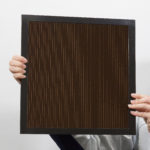Hunt Perovskite Technologies (HPT), a Dallas, Texas-based perovskite material developer, reached a milestone in the development of a highly-durable perovskite technology for the manufacture of low-cost printed solar cells.
In December 2019, HPT successfully demonstrated that its ink-based process was able to produce a perovskite solar cell that exceeded key benchmarks recognized by the solar cell manufacturing industry and exceeded the International Electrotechnical Commission (IEC) durability thresholds in temperature, humidity, white light and ultraviolet (UV) stress testing while reaching efficiency performance levels of 18%.
“The Hunt team is thrilled to have achieved this level of progress to-date,” said Hunter Hunt, chief executive officer of Hunt Energy. “We strategically chose to develop perovskite solar several years ago; we envisioned its strategic importance as an innovative new energy technology in addressing the world’s energy needs for the future, as well playing a part in combating climate change. As part of the global energy transition that is occurring, our solar team is hoping to make a meaningful contribution.”
Interest in perovskite solar technology has increased significantly since debuting in 2009 given its potential for high efficiency, low cost and applicability. However, while researchers worldwide have made rapid progress on improving perovskite solar cell efficiency, progress in improving durability has been slow. Hunt’s results show that its technology has achieved improved durability while achieving high efficiency, and it has done so using a scalable, potentially lower cost manufacturing process.
To date, Hunt has been granted 18 patents by the United States Patent and Trademark Office and 30 additional patents by various foreign patent offices.
“When we started developing this technology, we took a different approach from others in the industry,” said Michael D. Irwin, chief technology officer of Hunt Perovskite Technologies. “While we knew it would initially be a harder path to follow, we also believed it would be a better way to realize the overall application potential of an all perovskite solar cell, both in terms of cost and, more importantly, durability.”
For the past six years, Hunt has been working as a corporate partner with researchers at the U.S. Department of Energy’s National Renewable Energy Laboratory (NREL) on the development and testing of its perovskite technology.
“Hunt has been an important partner and collaborator in NREL research on perovskite solar cells from the early days of our investigation into these materials,” said Joe Berry, senior scientist on NREL’s Perovskite and Hybrid Solar Cells Team. “We look forward to continued collaboration with our industry partners as we seek to develop and, ultimately, deploy these promising technologies from the laboratory to the marketplace.”
Hunt Perovskite Technologies specializes in the development of highly-stable and efficient metal halide perovskite materials for use in single-junction PV solar panels for the utility-scale market. It is part of a larger privately-owned group of companies managed by the Ray L. Hunt family that engages in oil and gas exploration, refining, power, real estate, ranching and private equity investments.
News item from HPT








“However, while researchers worldwide have made rapid progress on improving perovskite solar cell efficiency, progress in improving durability has been slow. Hunt’s results show that its technology has achieved improved durability while achieving high efficiency, and it has done so using a scalable, potentially lower cost manufacturing process.”
Indeed, durability and service life would be tantamount to keeping this technology viable as a solar harvest resource. I also ran across an article where Panasonic has a perovskite panel at 16% efficiency. Since Panasonic has both the HIT solar cell and Perovskite cell technology under one roof, could it be Panasonic will be the first to try a HIT panel with spray on perovskite for a solar PV panel of over 30% efficiency?
Solarman, check out Oxford PV. Imagine 210mm silicon cells with stable perovskite on top. Great advances.